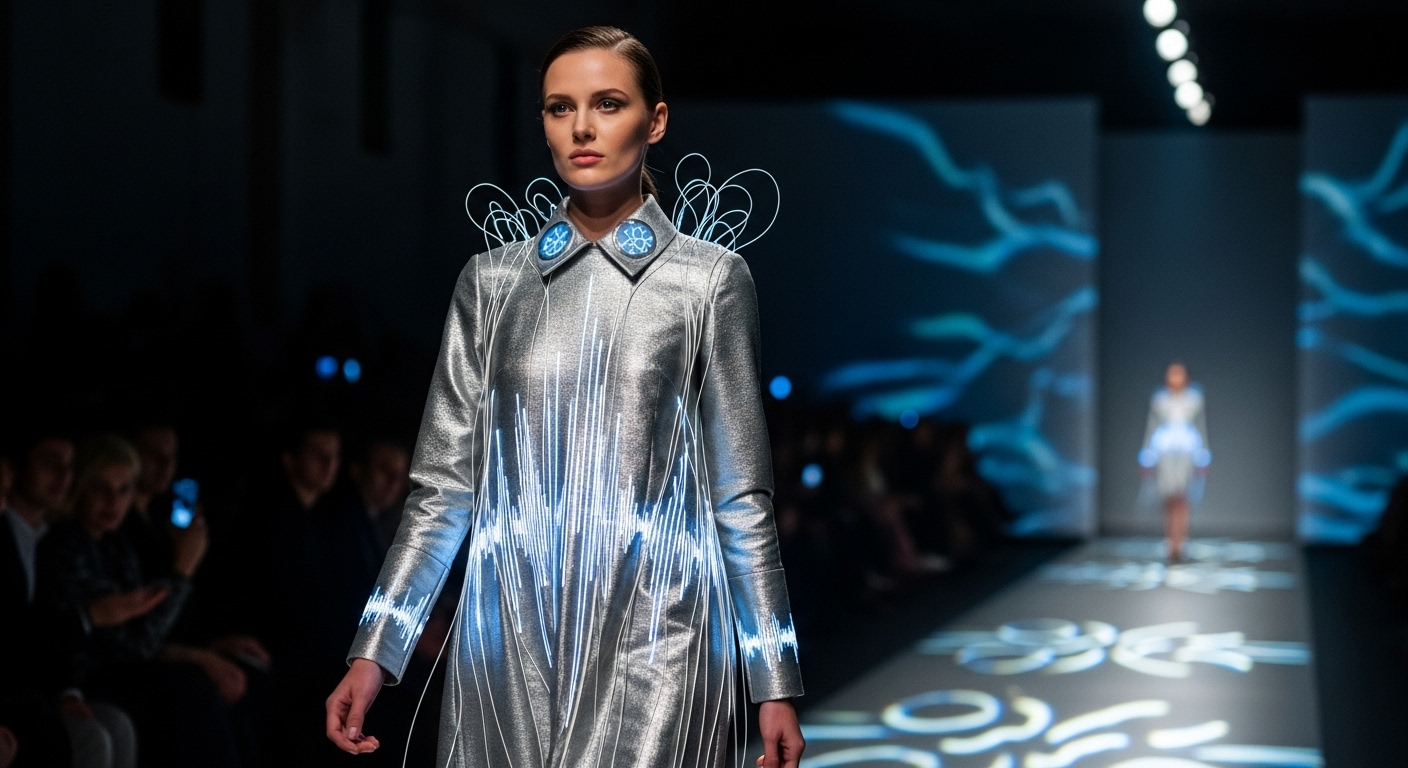Holographic Haute Couture: Fashion's Next Dimension
In the ever-evolving landscape of fashion, a groundbreaking fusion of technology and couture is reshaping runways and redefining the boundaries of wearable art. Holographic haute couture, a cutting-edge trend merging high-end fashion with advanced holographic technology, is captivating designers, celebrities, and fashion enthusiasts alike. This innovative approach to garment design not only pushes the limits of creativity but also challenges our perceptions of materiality and form in the world of high fashion.

Technological Marvels Behind the Seams
At the heart of holographic haute couture lies a complex interplay of advanced technologies. Micro-projectors, often no larger than a fingernail, are seamlessly integrated into garments. These projectors work in tandem with specially developed fabrics that serve as screens, capable of displaying high-resolution, three-dimensional images. The result is clothing that appears to shift, transform, and even defy physical constraints, creating an ethereal and dynamic visual experience.
From Runway to Red Carpet
Holographic haute couture made its debut on major runways in Paris and Milan, quickly capturing the attention of the fashion world. Celebrity stylists, always on the lookout for show-stopping pieces, were quick to embrace this new form of wearable art. A-list stars began appearing at premieres and award shows adorned in shimmering, shape-shifting gowns that seemed to dance with light. These appearances not only garnered extensive media coverage but also sparked conversations about the future of fashion and its intersection with technology.
The Artistry of Digital Design
Creating holographic garments requires a unique skill set that bridges the gap between traditional fashion design and digital artistry. Designers must not only consider the physical structure and fit of a garment but also conceptualize how it will interact with projected light and movement. This has led to collaborations between fashion houses and digital artists, resulting in breathtaking creations that blur the line between clothing and moving art installations. Some designers have even begun hosting virtual fashion shows, where entirely digital holographic collections are showcased in immersive, computer-generated environments.
Sustainability and the Future of Fashion
One of the most intriguing aspects of holographic haute couture is its potential impact on sustainability in the fashion industry. As the technology advances, some designers envision a future where a single, adaptable garment could replace an entire wardrobe. By changing the holographic projection, one piece of clothing could transform its appearance countless times, potentially reducing the need for fast fashion and its associated environmental costs. While still in its early stages, this concept has sparked discussions about long-term sustainability solutions in an industry often criticized for its environmental impact.
Challenges and Ethical Considerations
Despite its dazzling potential, holographic haute couture faces several challenges. The technology is still in its infancy, with issues of battery life, durability, and practicality yet to be fully resolved. There are also concerns about privacy and consent, particularly regarding garments that could potentially display moving images or advertisements. As the technology evolves, industry leaders and policymakers will need to address these ethical considerations to ensure responsible development and use of holographic fashion.





